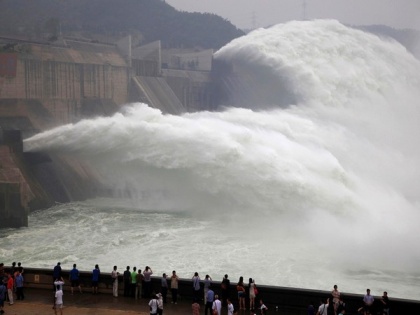After Mekong, China focuses to take control over Brahmaputra's water
By ANI | Published: February 11, 2021 04:00 PM2021-02-11T16:00:56+5:302021-02-11T16:10:08+5:30
In yet another example where China has run into rough waters with its neighbours, the country has planned to build the world's biggest dam on River Brahmaputra - a 60-gigawatt mega-dam in the Tibetan Autonomous Region (TAR), reported Al Jazeera.

After Mekong, China focuses to take control over Brahmaputra's water
In yet another example where China has run into rough waters with its neighbours, the country has planned to build the world's biggest dam on River Brahmaputra - a 60-gigawatt mega-dam in the Tibetan Autonomous Region (TAR), reported Al Jazeera.
China is planning to construct a mega-dam on the Yarlung Zangbao River (known as the Brahmaputra in India), which flows through Tibet, Bangladesh and eventually becomes the Brahmaputra when it enters India.
The Yarlung Zangbao Dam plan is moving ahead without China discussing or entering into water-sharing agreements with downstream India or Bangladesh.
With the proposed mega-dam sited just 30 kilometers (18 miles) from the Indian border, Tempa Gyaltsen Zamlha, the head of Environment and Development at the Tibetan Policy Institute believes the Chinese Communist Party (CCP) will "definitely try to use it as a political tool".
A spokesperson for India's ministry in charge of managing its water resources said it would respond with a 10-gigawatt project on another tributary of the Brahmaputra, reported Al Jazeera.
Sensing a tense situation ahead, the US has tried to prod the two sides into resource-sharing.
The Tibet Policy and Support Act, recently signed into law by Congress, outlined a commitment to "encourages a regional framework on water security... to facilitate cooperative agreements among all riparian nations ... on the Tibetan Plateau."
Likewise, the International Water Courses Convention, adopted by the United Nations in 1997, applies certain rights and duties in relation to trans-boundary flows, although neither Bangladesh, India or China are signatories.
Brian Eyler, an expert in rivers who is the director of the South East Asia Program at the Stimson Center said China has built several small- and medium-sized dam and as per an analysis of recent data on Chinese dams, "these operations have delivered deeper and deeper cuts to the downstream communities of the once-mighty Mekong river."
He also noted that "zero coordination for operating dams" has allowed China's 11 Mekong dams to disrupt fish life and the flow of sediment and has directly contributed to the collapse of river banks and the destruction of communities.
Further, experts have warned the record-breaking dam is likely to have political and environmental consequences.
The geopolitical factors were brought into sharp focus when China clashed with India in Ladakh in June last year and a 2017 border stand-off near the border with Bhutan, which has angered both nations over China's unilaterally decided hydroelectric power scheme.
Not only India but other nations of Southeast Asia are affected due to China's lack of consultations with downstream neighbours and have sparked controversy with them.
China's 11 mega-dams on the Mekong River have caused water levels there to fluctuate widely without prior notice to Myanmar, Laos, Thailand, Cambodia and Vietnam.
Some analysts believe China is using its leverage over water flows as a stick to win concessions from downstream Southeast Asian states on other issues, including in regard to its Belt and Road Initiative.
Moreover, Tibetan rights activists are opposing the move to build the dam at Yarlung Tsangpo River, as they consider it sacred - it represents the body of the goddess Dorje Phagmo, one of the highest incarnations in Tibetan culture.
( With inputs from ANI )
Disclaimer: This post has been auto-published from an agency feed without any modifications to the text and has not been reviewed by an editor
Open in app